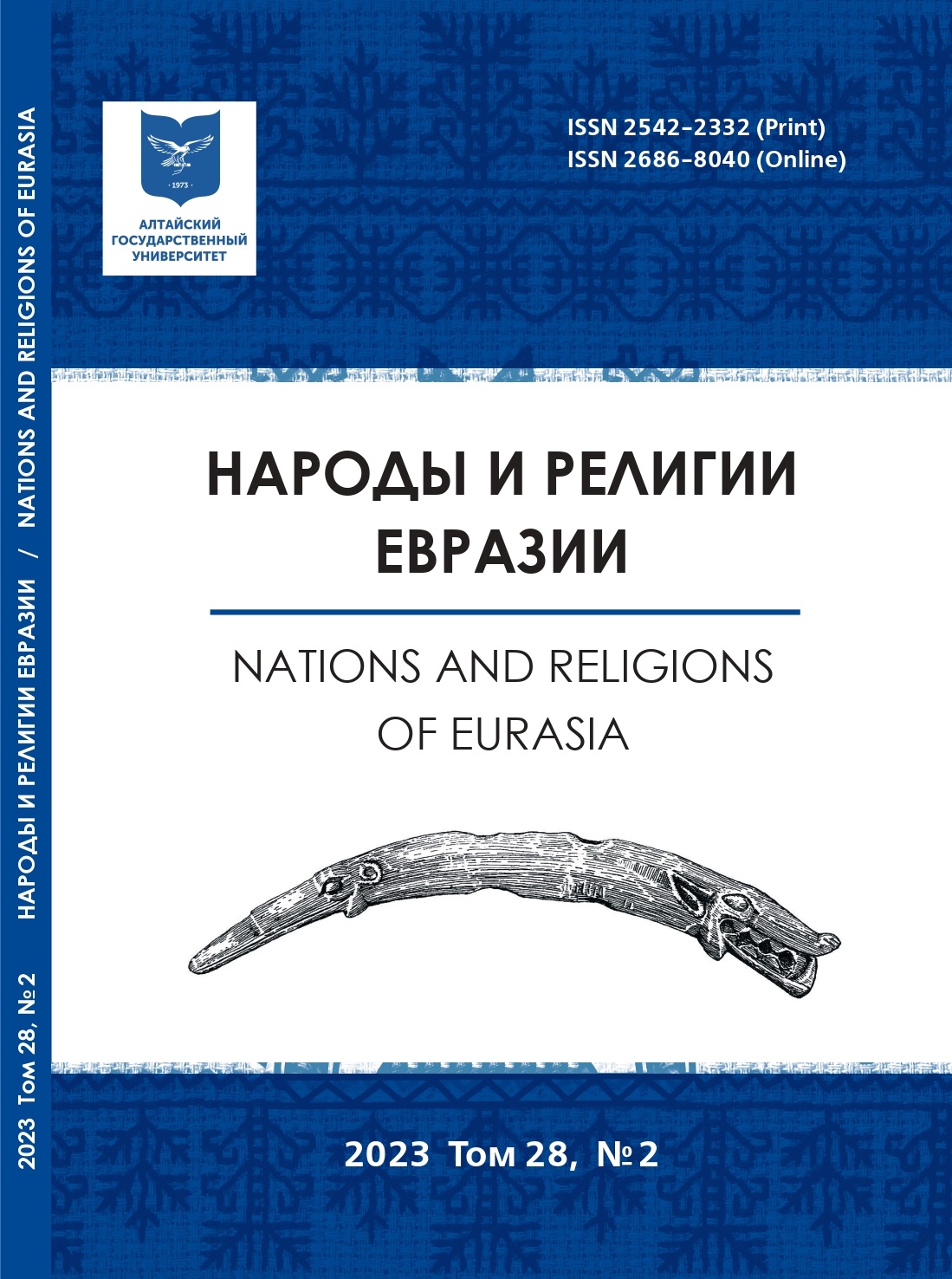Church museums and cultural heritage in the context of religious policy in Western Siberia
Main Article Content
Abstract
The formation of the church museum was facilitated by the development of church history, as well as the inclusion of enlightened clergy and scientific intelligentsia in the cultural protection activities. The formation in the second quarter of the 19th century of the state system of protection of monuments necessitated the development of the monument protection movement of the Russian Orthodox Church. Church museums are being opened everywhere to preserve and broadcast the Orthodox historical and cultural heritage. At the turn of the 19th — the first quarter of the 20th century, the Holy Governing Synod issued a number of decrees aimed at preserving the heritage of the Church, as well as at developing and expanding church museums in areas where the majority of the population professed Orthodoxy. A wave
of widespread opening of museums subordinate to the Russian Orthodox Church, including museums in Siberia, falls on the first quarter of the 20th century. Church museums in Siberia formed collections not only reflecting the development of the Russian Orthodox Church in the region, but also the life and culture of the local indigenous population.
After the seizure of power by the Bolsheviks in Russia, church museums were liquidated almost everywhere, and the collections were distributed among the repositories of state museums or destroyed. A similar fate befell the collections of the Tobolsk ancient storage, while the collection of the Tomsk Church and Archaeological Museum disappeared almost without a trace. Only the museum of the Obdorsk spiritual mission, due to the collection of local history, which is of great interest among the researchers of Siberia, was able to integrate into the museum state network and continue its activities. In the process of liquidation and robbery of churches and monasteries, the seizure of church valuables and bells by the authorities, the Orthodox cultural heritage was seriously damaged. The subsequent liberalization of state-church relations in the post-war period gave impetus to the opening of churches, and, accordingly, spiritual institutions, under three of which, church-archaeological offices resumed their activities. On the territory of Western Siberia, there was no restoration of the activities of the museums of the Russian Orthodox Church, since the opening of Orthodox seminaries in the Soviet period, according to the church policy of the state, was not planned here. With the Renaissance of Orthodoxy in the late 1980s. there is a progressive revival and formation of church museums. In Western Siberia, modern church museums are gradually developing, starting only from the beginning of the 21st century.
Downloads
Metrics
Article Details

This work is licensed under a Creative Commons Attribution 4.0 International License.
References
Алексеева Л. С., Горбатов А. В. Церковный музей в дореволюционный период: этапы и факторы становления // Вестник КемГУ. 2018. № 2 (74). С. 5-9.
Берегите памятники старины // Красное знамя: томская областная ежедневная газета. 1922. № 176. С. 3.
Горбатов А. В., Демченко Г. А. Колокола и звонарская традиция на Кузнецкой земле: история и современность // Вестник Томского государственного университета. Культурология и искусствоведение. 2021. № 41. С. 198-206.
Государственный архив Российской Федерации (ГАРФ). Ф. Р-5263. Оп. 1. Д. 652.
Государственный архив Новосибирской области (ГАНО). Ф. Р. 1146. Д. 217.
О составлении списков древним церковным и монастырским вещам: определение Синода от 1882 г. // Церковный вестник. 1882. № 25. С. 95.
Об охранении памятников церковной древности в монастырях и церквях империи: определение св. Синода от 1903 г. // Церковные ведомости. 1903. № 11. С. 75.
Отчет о деятельности Тобольского епархиального Братства св. вмч. Дм. Солунского за 1912-13 г. // Тобольские епархиальные ведомости. 1914. № 9.
Российский государственный архив социально-политической истории (РГАСПИ). Ф. 17. Оп. 125. Д. 407.
Скосырев Н. Д. Археологическая редкость ризницы Тобольского Кафедрального Собора // Тобольские епархиальные ведомости. 1890. № 21/22. С. 506-507.
Тобольское церковное древлехранилище в 1902-1903 г. // Тобольское церковное древлехранилище. 1904. Вып. 3. С. 34-42.
Шабунин Е. А. Епископ Томский Сергий (Дмитриевский Сергей Павлович) // Образование и Православие. URL: http://www.orthedu.ru/kraeved/1948-10.html (дата обращения: 10.01.2023).
Юрьевский А. Ю. Отношение царствующего Дома Романовых к Тобольской епархии // Тобольские епархиальные ведомости. 1913. № 5. С. 81-86.
Юрьевский А. Ю. Редкий памятник Сибирской духовной письменности первой половины XVII века: (сказание об Абалакской иконе Божией Матери) // Тобольские епархиальные ведомости. 1902. № 24. С. 447-464.
Юрьевский А. Ю. Тобольское церковное древлехранилище // Тобольские епархиальные ведомости. 1902. № 22. С. 398-408.
Teryukova E. A. Central Anti-Religious Museum in Moscow: Historical Landmarks (19291947) // Религиоведение. 2019. No 4. P. 121-127.

